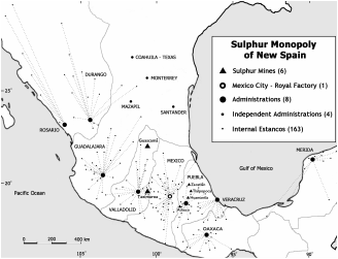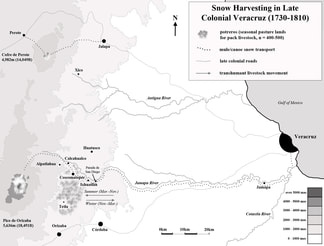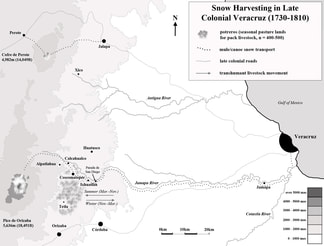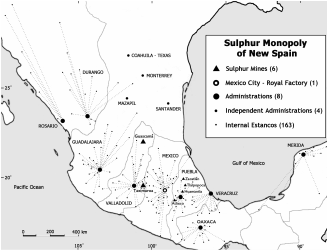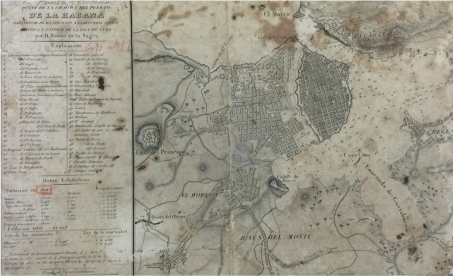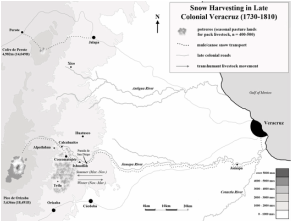This project examines the production of explosives in the New World -- from collection of the primary ingredients needed to produce them (volcanic sulphur, saltpeter, and charcoal) to the use of explosives in the military and the cartridge blast mining industries. Findings challenge current understandings of the roles of innovation, environment, and technology in the conquest and colonization of the New World.
Explosives in the New World: Environment and Economy
LaFevor's research into the environmental history of Mexico and the larger Atlantic World focuses on natural resource management during the Spanish colonial period, roughly from 1520 to 1820. He is particularly interested in the discovery and extraction of natural resources, and the human-environment relationships and transatlantic commodity chains that subsequently developed. In the archives, he digitizes documents using high-resolution photography. Once in PDF format he transcribes them and often uses software (atlas.ti) to code for different themes, eventually building grounded theories for what the documents reveal through both qualitative and quantitative data. Synthesizing these data can be challenging, but is a key part of better understanding the patterns and processes behind historical human-environment interactions, and building the case study meta-analyses, theories, maps, charts, and graphs that help elucidate them. Below are descriptions of three ongoing archival projects. Other works can be found on the CV tab.
Archival Research:
Snow in Colonial Mexico
This project is an ongoing collaboration with Elisabeth Butzer of UT Austin that examines the collection, transport, and consumption of snow in colonial Mexico. Our first paper examined 17th and 18th-century Veracruz where snow was considered the only effective remedy for several tropical diseases.
This multi-year project is co-directed with David LaFevor of the University of Texas at Arlington. The goal is to identify and preserve endangered archives in Havana, Camagüey, Bayamo, Trinidad, Sancti Spíritus, Santiago de Cuba, and Baracoa, Cuba. The project is funded by the British Libraries Endangered Archives Programme and is an extension of the Vanderbilt University Ecclesiastical & Secular Sources for Slave Societies (ESSSS) project, directed by Jane Landers.
|
Matt LaFevor's research into the environmental history of Mexico and the larger Atlantic World focuses on natural resource management during the Spanish colonial period, roughly from 1520 to 1820. He is particularly interested in the discovery and extraction of natural resources, and the human-environment relationships and transatlantic commodity chains that subsequently developed. In the archives, Matt digitizes documents using high-resolution photography. Once images are PDFed, he transcribes them and often uses software (atlas.ti) to code for different themes, eventually building grounded theories for what the documents are revealing. He works with both qualitative and quantitative data. Synthesizing or integrating these two data types can be challenging, but is a key part of better understanding the patterns and processes behind historical human-environment interactions, and building the case study meta-analyses, theories, maps, charts, and graphs that help elucidate them. Below are descriptions of three of Matt's ongoing archival projects. Other works can be found on the 'overview' or 'CV' tabs.
|
Cuban Archives Digitization
This multi-year project is co-directed with David LaFevor of the University of Texas at Arlington. The goal is to identify and preserve endangered archives in Havana, Camagüey, Bayamo, Trinidad, Sancti Spíritus, Santiago de Cuba, and Baracoa, Cuba. The project is funded by the British Libraries Endangered Archives Programme and is an extension of the Vanderbilt University Ecclesiastical & Secular Sources for Slave Societies (ESSSS) project, directed by Jane Landers. See below link for more info and summary of findings to date.
|
